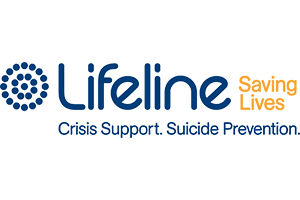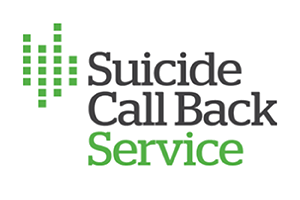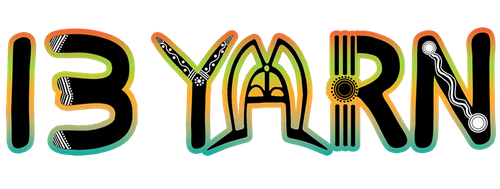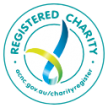- Mark as New
- Mark as Read
- Favourite
- Subscribe
- Printer Friendly Page
- Flag for Moderator
At some point in our lives, many of us will go through or witness a traumatic event - something shocking, distressing, or dangerous. These events can challenge our ability to cope and change how we understand the world.
After an experience like this, it’s normal to go through changes, perhaps feeling more jumpy, moody, or having trouble sleeping. However, when these changes persist, it can become a diagnosis of post-traumatic stress disorder (PTSD) - something 12% of Australians experience at some point in their lives (1).
It’s important to talk about the reality of living with PTSD and the effects of trauma. This way, people can recognise what they’re going through and get support as soon as possible.
1. Each person defines what is traumatic
Traumatic experiences are overwhelming to a person and typically involve a significant threat to a person’s safety. That's why you may see military combat, acts of terror, interpersonal violence, and natural disasters included on lists defining trauma.
However, what feels overwhelming and unsafe will vary from person to person. For example, people can experience symptoms of PTSD after witnessing or hearing about details of trauma, even if they don't live through the event themselves.
Anyone experiencing challenges after an event that is significant to them is worthy of support, treatment, and being taken seriously.
2. Flashbacks are only one of the symptoms
Flashbacks are a well-known symptom of PTSD that we often see in movies and popular culture. They feel like re-living the traumatic event – almost like you were there again.
Re-experiencing the traumatic event is a core part of PTSD, which can occur through intrusive memories, nightmares, or intense physical sensations. However, there are other lesser-known symptoms of PTSD, such as:
- Being wound-up and on the lookout for danger
- Changes in mood like feeling irritable, ashamed or numb
- Negative thoughts and feelings about the self and the world
- Avoiding reminders of the trauma
- Dissociation or feeling removed from reality.
- Physical challenges, like difficulty with sleep or concentration.
3. People with PTSD are strong
Imagine physically and psychologically re-living a traumatic event regularly. That is hard! And some people living with PTSD are doing this every day.
It takes a tremendous amount of strength and resilience to manage these experiences and seek support.
4. Triggers can be almost anything
Triggers depend on the individual and what they have been through. These can be objects, events, or even words or colours that many people would not expect to be triggering.
Triggers can also be internal thoughts, feelings, and bodily sensations. For example, feelings such as anxiety, anger, or loneliness and sensations like a racing heart or muscle tension can all be upsetting if they remind someone of a traumatic event.
5. PTSD can get overlooked
Often a person with PTSD will experience other mental health issues that are more recognisable to them and others. They might be living with an eating disorder, substance use, depression or a personality disorder. Sometimes these experiences will be treated for a while before symptoms of PTSD are noticed.
PTSD can also be hard to recognise when it emerges years after a traumatic event, or when symptoms are more subtle. For example, someone who has survived child abuse might struggle to trust others as an adult and only connect this with past experiences many years later.
6. There is a type of PTSD called complex PTSD
The diagnosis of PTSD has been around since the 1980s and is often linked to short-term or single traumatic events. However, a newer diagnosis of complex-PTSD emerged recently to recognise the effects of prolonged or repeated trauma, such as child abuse or domestic violence.
People with complex PTSD have symptoms of PTSD, but in addition, they have feelings of worthlessness or shame, difficulty managing emotions and challenges in relationships. These are all understandable responses to long-term interpersonal trauma.
7. There is effective support for PTSD and complex PTSD
Recovery is possible for people experiencing post-traumatic symptoms!
The support of a therapist is helpful for many people with PTSD and complex PTSD. With a therapist, a person learns to understand how the trauma impacts them, strategies for dealing with their triggers, and challenges unhelpful beliefs about themselves and the trauma.
Some people also process unresolved aspects of the trauma in a safe and structured way through therapy.
In addition, many people find connecting with others, meaningful activities, and learning how to calm the mind and body helpful for their recovery as well.
PTSD, complex PTSD and the impacts of trauma are not a life sentence. With treatment and support, symptoms of PTSD can decrease and even go away completely.
Now we’d like to hear from you – what do you think everyone should know about PTSD, complex PTSD and trauma?
And if you’re new, welcome! You can register here to join our safe and supportive online community.
Resources
- PTSD factsheet
- Phoenix Australia centre for post-traumatic health
- Blue Knot Foundation empowering recovery from complex trauma – 1800 421 468
- ‘Nothing was ever your fault’” living with PTSD and complex PTSD – blog
References
- Australian Bureau of Statistics. National Survey of Mental Health and Wellbeing: Summary of Results [Internet]. 2008.
- « Previous
-
- 1
- 2
- 3
- 4
- Next »
You must be a registered user to add a comment. If you've already registered, sign in. Otherwise, register and sign in.













